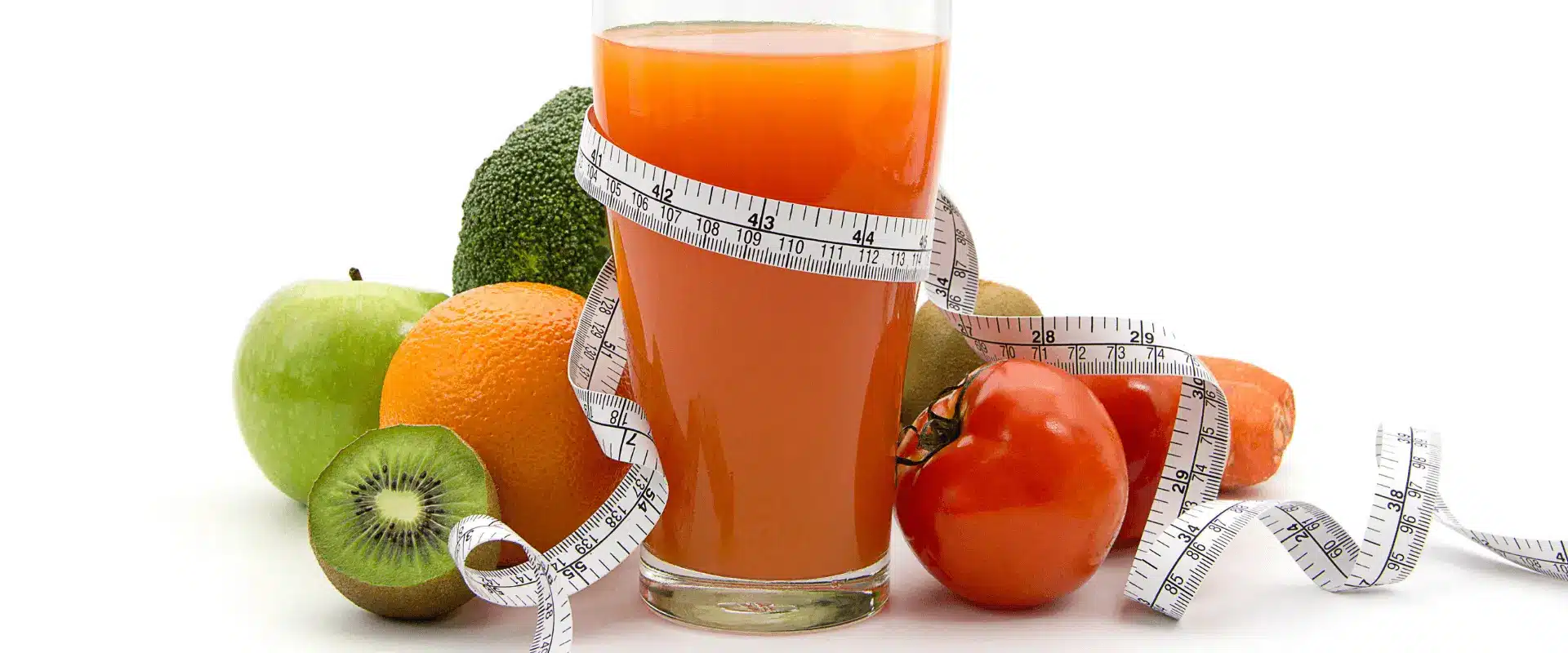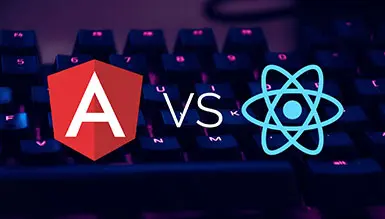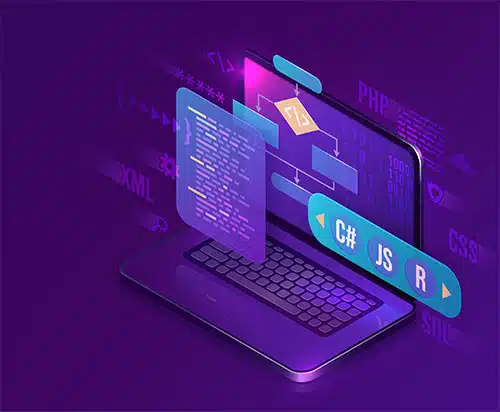Health-conscious eating has become increasingly popular over the past few years. More and more people are turning to nutrition apps to help them stick to a healthy diet and keep tabs on their progress. Businesses are eager to enter the Health market by developing a diet app because of the high demand.
Here, you’ll find everything you need to know about Building a Diet or Nutrition App. Throughout this post, we’ll give you information on diet apps, including their purpose, who they’re designed for, how to create an app from scratch ,and how they make money.
Diet and Nutrition App Features and Functionality
If you want your health tracking platform to stand out from your primary competitors, your nutrition meal planner software, like any other online or Mobile applications, must have a particular capability set and a number of basic features.
Must-have features for Nutrition and diet apps
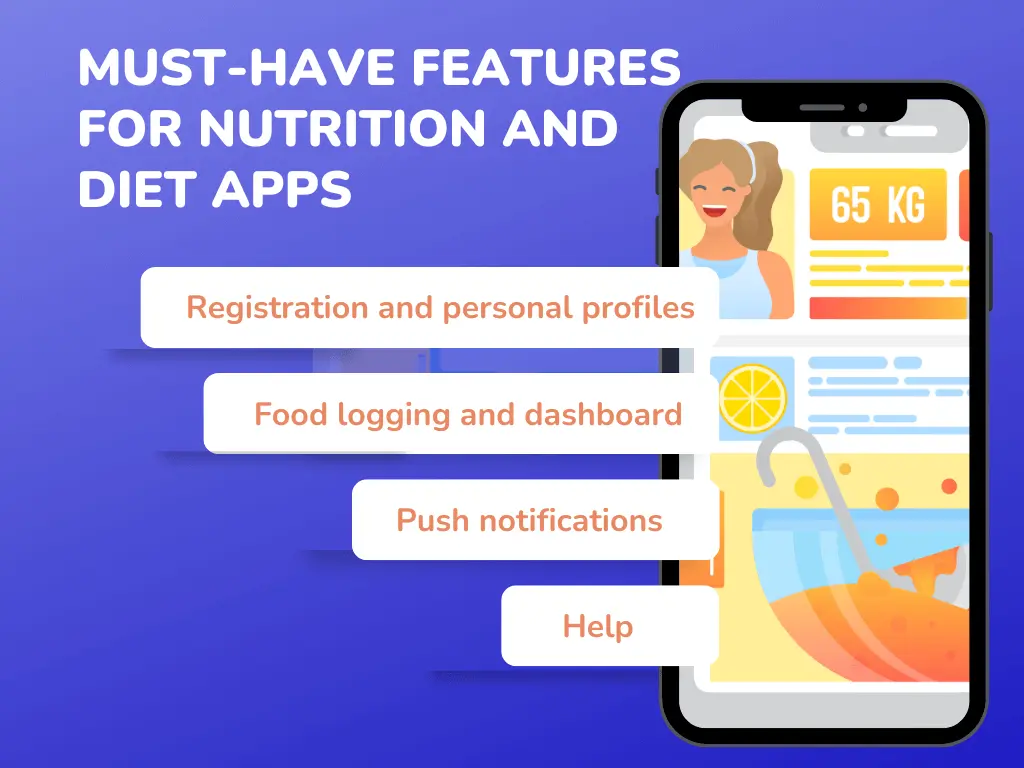
- Registration and personal profiles: Users typically begin their app experience by signing up for an account and creating a personal profile. At this point, users should provide personal information such as their name, age, gender, weight, height, level of physical activity, and any allergies or food preferences they may have.
- Food logging and dashboard: Analysis of eating habits should be possible for users. If you want to keep track of their progress, you’ll need an app that lets them do just that. Tracking calories, carbohydrates, protein, and fat can all be done on a user’s dashboard.
- Push notifications: User retention and engagement can be increased by using push notifications. Apps that keep track of what you eat can help you track your progress toward your current goal and encourage you to keep going in the direction you want to go by reminding you to keep track of what you eat.
- Help: An app’s onboarding process is critical. Make sure that your app’s tutorials clearly explain how to use it. Add a help option for users who run into issues after signing up.
- Moreover, it is possible to use nutrition applications for a variety of different purposes, and their features will reflect that. Diet and nutrition apps can benefit from the features listed below (or that you may want to include later on).
Also Read this – Top Mobile App Development Trends in 2021-22
Nice-To-Have Features for A Diet and Nutrition Apps

Blog
Firstly, using a blog, you can disseminate diet advice, nutrition-related news, and the most recent findings in the field. Apps can benefit from social media marketing if they have useful content that is shared by users. Your readers can also contribute to the blog by sharing their successes and failures in keeping a healthy diet.
Calorie counter
This feature will make it possible for users to calculate the number of calories consumed and burned.
Recipe book
You can offer healthy recipes and categorize them by keywords, calories, ingredients, and categories in a recipe book that you can add to. Moreover, pictures, videos, and even voice instructions can be included in recipe cards. Adding a recipe rating system is also an option.
Shopping list
You can offer the option of allowing customers to manually add groceries to a shopping list or to import components from a recipe or a diet plan into the shopping list.
Barcode scanner
A Barcode scanner will help users to keep track of calories. Moreover, users can get Accurate nutrition information.
Live experts
You can provide a diet coaches option to users, and diet coaches can be contacted directly through your app if customers want their questions answered by a live person. In addition, you can charge for this service.
Diet plans
Counting calories isn’t enough for many users; they also want assistance in sticking to a healthy diet. Diet plans come in handy in this situation. You can add Nutritional advice, meal suggestions, calorie intake recommendations, and recipes in a diet plan.
Integration with wearables
Wearables and trackers can be integrated with your app to synchronize data on health indicators and physical activity, such as the Android Wear, Apple Watch, Fitbit, Jawbone, and Samsung Gear.
Gamification
Consider incorporating elements of a game into your app to keep your users interested and involved. Rewards like badges and ranks can be given out for accomplishments like meeting goals or losing weight. If you allow them to use these bonus points to get exclusive access to premium features or to create their own custom menus, users will be more incentivized to earn points.
Also Read this – Live Streaming App Development: All You Need to Know
How to Create a Nutritional and Dietary App?
It doesn’t matter if you go with iOS or Android; you have to go through the same process of discovery, requirements and prototyping, design and coding, and testing and deployment before releasing your app.
Discovery and research
It is the first phase of developing your idea into reality. At this point, you introduce your app to the software development team. At JumpGrowth, we help our clients to know whether or not their app idea is viable by analyzing the market, competitors, and target audience. After that, we establish the primary goals and the product’s core value. Next, a product specification document is written that outlines how your application will work.
Prototyping
Once you have given your approval to the product specification, our development team will move to the next step, which is wireframing. This saves Mobile App Developers a lot of time and effort and lays out the app’s structure, features, and navigation for them.
Code development
The most time-consuming part of the software development process is when your team’s coders turn your concept into a working product.
Testing and deployment
At this point, our (JumpGrowth) quality assurance professional runs the application through a series of tests to ensure that there are no issues. Finally, we will release the app to the app store once we’ve confirmed its stability.
Our experts can help you in developing your next world-class Health and Nutrition Apps.
App Development Costs: How Much Does it Cost?
A variety of variables determines the price of any diet or nutrition app. There are a number of elements that determine how much money you’ll need to invest in the development of your application:
- Emergency
- Difficulty
- Experience
- Technology.
However, these are just a few of the many factors that affect the financial side of development:
- Technology and resources at one’s disposal
- How big a team is
- Type and number of platforms;
- Requirement for testing and bug fixes.
Making a final decision on a number of issues is necessary before you can estimate the cost of your Diet and Nutrition App Development.
- The primary functions and features;
- Who will develop your app?
- PM and QA are on-site for your project.
- Web and/or mobile application;
- Native, hybrid, or cross-platform mobile app;
- scalability and adaptability of the application;
- Deadline.
A development company can help you figure out how much money you need to invest in your project. Those reasons are why we’re here (Jumpgrowth). Don’t be surprised if you’re paid differently for the same amount of work by different development teams.
An experienced specialist is usually more expensive per hour than a recent college graduate. Additionally, these price disparities may be affected by:
- Location of business;
- Specialists’ knowledge and abilities.
Just like the cost of developing a mobile application or a website, an Android or iOS diet and nutrition app is determined by various factors.
For a better knowing, you can contact a software development company for a quotation. It is a common service offered by many software development companies. Companies that have been around for a long time tend to offer free estimates since it improves customer trust and competition, which is always beneficial for the brand.
Get a free quote to make a nutrition app with JumpGrowth
Apps have different technology stacks, features, designs, and platforms built into them. Your nutrition app costs more or less based on all of these things. This includes how many people work on your software and where they work.
JumpGrowth’s sales team can help you find out how much it will cost to make a nutrition app with JumpGrowth. If you have any questions about how the process works, our sales representative can also answer them.
A Diet and Nutrition App’s Profitability
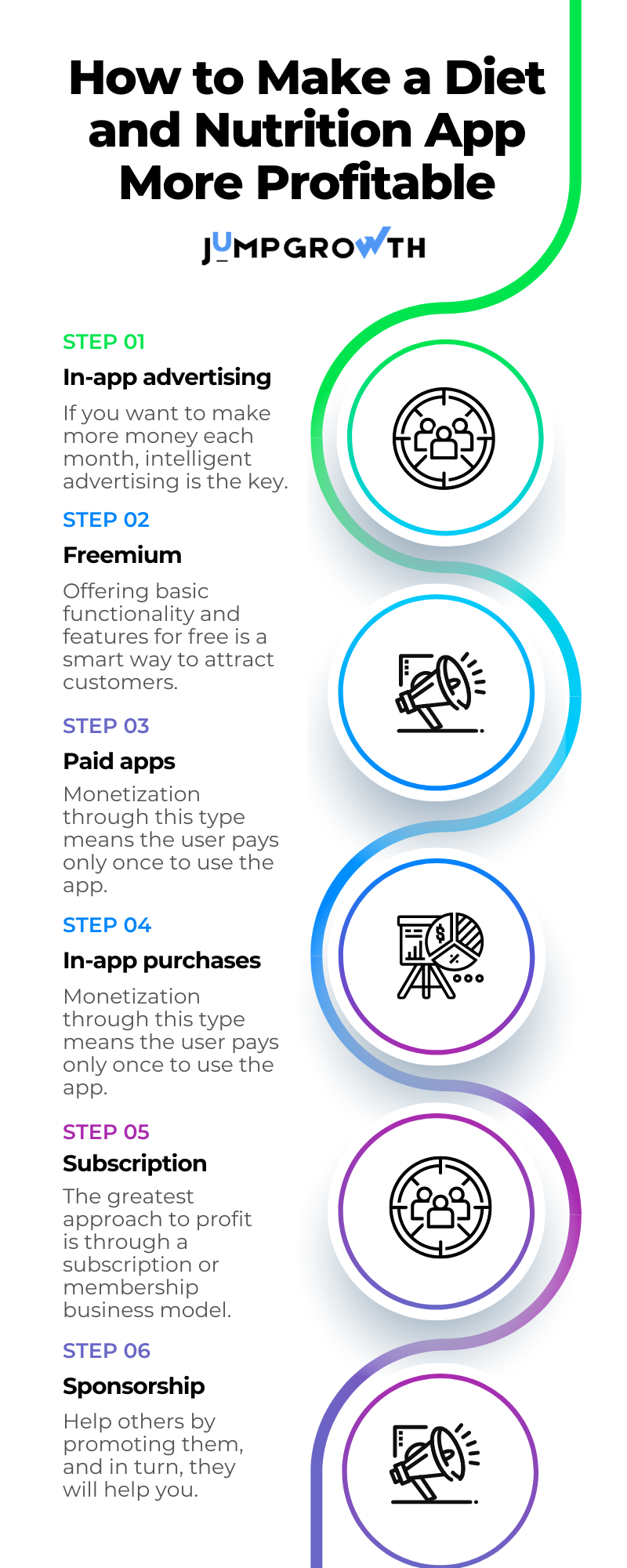
A well-designed monetization program can expedite and simplify the investment return process. You can use one monetization model that best suits your app, but you’ll gain more if you implement several money-making methods…
In-app advertising
Using smart advertising is the best way to increase conversions and monthly profits. If you decide to employ in-app advertising, you may delight your customers by displaying adverts that are tailored to their preferences. For instance, you can advertise health-related events, sportswear, food supplements, and so on.
Freemium
It’s a smart business move to offer basic functionality and features free of charge while charging for access to more advanced features. This allows you to attract a larger audience. People who use a diet and nutrition app for free are more likely to become members who pay for the app’s services if it meets their goals and needs. A freemium business model works well as a lone revenue stream or as part of a broader revenue stream.
Paid apps
This type of monetization means that the user only has to pay once to use the app. Consider offering a trial period before making your app commercially available to ensure that users are confident that it has all the features necessary to achieve a worthwhile health goal. Depending on your objective, trial periods can be as short as 5 days or as long as 2 weeks or 1 month. On the other hand, commercial applications should be of the highest calibre.
In-app purchases
App Store monetization is simple because of the wide range of demographics served by health-related applications. Some features, such as an activity tracker or a shopping list organizer, may be free for all users, while others, such as the app itself, may require a fee. In addition, if the app contains a store or a marketplace, in-app purchases can benefit from their presence. But make sure your payment gateway is as simple as possible cause a single critical step will stop the users from purchasing your app’s subscription.
Subscription
One of the best ways to monetize a diet and nutrition app is through a subscription or a membership business model. Customizable membership packs and regular discounts will encourage customers to extend their subscriptions and purchase more expensive membership packs. Subscription options like weekly, monthly, or yearly will help you win the trust of your customers and lower the number of app usage terminations, so be sure to offer these.
Sponsorship
If you work in the health and nutrition industry, you should use this type of business model to make money because it’s all about being healthy. Your app can only show the logos of different brands, so you can advertise businesses that aren’t in your field. You can feature the gym, sportswear, food, and supplement companies. This would be a good place to put them, as well. Promote yourself and be promoted in a way that helps both of you.
The monetization models shown above are most likely to work well for applications related to diet and nutrition, but they’re not the only ones. A good app should be able to change with the times so that you can add or remove monetization features as your business needs change.
Conclusion
Diet and nutrition apps will stay popular for a long time because people are more interested in good health. People who live in polluted areas often eat pesticides and other things that could be bad for them. This makes it hard for businesses to do well.
Easy to use, intuitive design, a wide range of features, and smart ways to make money. All these factors make one diet and Health Nutrition App Development a big hit and a big business.
You must have a good idea for a business. Moreover, you need a team of experts who can make a great digital business product to be able to compete in the market.
Our experts can help you in developing your next world-class Health and Nutrition Apps.
Frequently Asked Questions:
Q1: What characteristics does a diet and nutrition app have?
A diet and nutrition app include features that allow users to track their food intake, connect with other users for support, and learn about healthy eating habits. Some common features include:
- A calorie counter that allows users to track their caloric intake and expenditure.
- A food journal that allows users to document what they eat and how much they exercise.
- A weight tracker that allows users to track their weight and progress over time.
- A fitness tracker that allows users to track their fitness progress and monitor their health metrics.
Q2: How can I make my own diet and nutrition application?
There are a few key things you’ll need to do to make your own diet and nutrition application.
- First, you’ll need to come up with a clever name for your app.
- Second, you’ll need to create a well-designed logo to represent your app.
- Third, you’ll need to choose which platforms you want to develop your app for – iOS, Android, or both.
- Fourth, you’ll need to come up with a list of features that your app will offer. Some popular features of diet apps include the ability to track your food intake, water intake, and exercise; set goals; and receive tips and motivation.
- Fifth, you’ll need to find a developer to help you turn your vision into reality.
Q3: What advanced functions does a diet and nutrition app have?
A diet and nutrition app can have a variety of advanced functions designed to help users reach their health and fitness goals. Some of these functions may include:
- A food and calorie tracker that allows users to input the foods they eat and see the nutritional content of each meal.
- A water intake tracker to help users stay hydrated throughout the day.
- An exercise tracker that lets users log their workouts and see the calories they’ve burned.
- A weight tracker to help users monitor their progress over time.
- A meal planner that helps users plan healthy meals and snacks.
- A grocery list feature that lets users add items they need to buy to a list.
- Recipes feature that provides users with healthy recipe ideas.
- A tips and advice section that gives users information on healthy eating and living.
Q4: How can a diet and nutrition app be made to work with wearable technology?
There are a few different ways that a diet and nutrition app can be made to work with wearable technology. One way is to have the app track the user’s activity level and caloric intake and output and give recommendations based on that data. A different approach is to have the app offer details on wholesome foods and recipes that the user can access later via their wearable device.
Q5: What are the most widely used monetization strategies for diet and nutrition apps?
There are a few different monetization strategies that are commonly used for diet and nutrition apps. One popular option is to offer the app for free, but then charge for premium features or content. This can be an effective way to monetize an app because it allows users to try out the basic features before deciding whether they want to pay for more.
